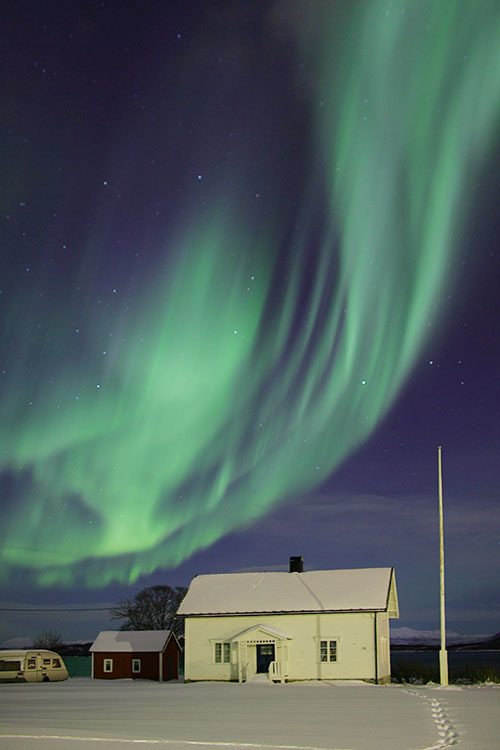 Earth shows it skin (for that is the part in which we live; the mantle being the inner organs, if you will) off in many forms of beauty; I have been lucky enough to see the Great Barrier Reef, the Grand Canyon, the Rockies, the Sierra, and the California Coast. Those are all 'permanent' (at least in our era) geological features (besides the Great Barrier Reef, which is made up of many living things). Perhaps the most unique natural phenomenon is that of the Aurora Borealis and Aurora Australis; the Northern and Southern Lights. For many years these strange, mostly polar dances of light across the night sky remained a mystery for ages. While, like most of human knowledge, much remains to be discovered, scientists have reportedly found "the trigger" to those strange, surreal, and yet beautiful phenonemon. I hope to see it someday.
Earth shows it skin (for that is the part in which we live; the mantle being the inner organs, if you will) off in many forms of beauty; I have been lucky enough to see the Great Barrier Reef, the Grand Canyon, the Rockies, the Sierra, and the California Coast. Those are all 'permanent' (at least in our era) geological features (besides the Great Barrier Reef, which is made up of many living things). Perhaps the most unique natural phenomenon is that of the Aurora Borealis and Aurora Australis; the Northern and Southern Lights. For many years these strange, mostly polar dances of light across the night sky remained a mystery for ages. While, like most of human knowledge, much remains to be discovered, scientists have reportedly found "the trigger" to those strange, surreal, and yet beautiful phenonemon. I hope to see it someday.
There are few things as American as a good, ol' fashioned bottle of Coca-Cola. Certainly there aren't many things that Atlanta identifies with more. Perhaps the Braves, Rhett Butler, or the Georgia Peach. All those, however, are arguable. American's favorite soft-drink, however, is really not. While a global symbol of America, Coke is also very adaptive to wherever one finds it. One of the enjoyments of visiting Coca-Cola World are the beverages from around the world, which are (of course) all products of this most American of companies. Also, corn, for whatever reason, is not allowed for Ashkenazic (i.e., European) Jews to eat during Passover. Thus, regular Coke is not Kosher for Passover; it must be made special for the holiday using cane sugar, instead of corn syrup. Trust me, it the real sugar tastes much better.
Coke got a lot of negative publicity in the early 80s with their "new Coke" formula. They announced they were switching back, and it has been "Coca-Cola Classic" since. However, it underwent a change around that time that was very different from it's own origins. Before that time, Coke got it's sweetness from good, ol' fashioned cane sugar: sucrose. Since, it has been sweetened by a corn product, high-fructose corn syrup. To say that this syrup, HFCS, is found is nearly every food product today in this country is not an understatement. Whenever anything needs to be sweetened, HFCS has been the way to go, at least recently. This, of course, has nothing to with taste, but cost. Corn syrup is significantly cheaper than real sugar; and who can blame someone, some company for trying to cut costs when it comes to somethign as simple as just trying to make things sweeter? However, it is not so simple. HFCS is cheap because corn is an American product, and we prop up our farmers with enormous subsidies; perhaps only France is comparable in terms of artificially propping up their farm industry. So, support American products, right? Well, it's not that simple. First of all, HFCS is worse for you than the cane sugar product, sucrose. Second, if we ever decide to cut back tariffs, imported sucrose could make things cheaper, and (slightly) healthier than HFCS (which has certainly gotten a lot of flak recently). This reaches even to energy issues, too; Brazilian ethanol is cheaper made than American, as it is a product of cane sugar, as opposed to corn. High tariffs and artificial subsidies prop up the American corn industry; thus, Americans become fat off of HFCS, quite literally.
No comments:
Post a Comment